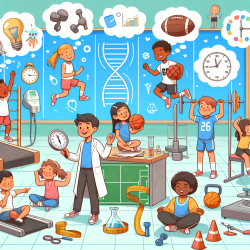Introduction
In the ever-evolving field of speech-language pathology, integrating cutting-edge research with clinical practice is essential for enhancing therapeutic outcomes. One such groundbreaking study, "Genome-wide matching of genes to cellular roles using guilt-by-association models derived from single sample analysis," provides a novel approach to understanding gene functions through expression analysis. This method, known as guilt-by-association, can be a powerful tool for practitioners seeking data-driven insights to improve their skills and ultimately, the outcomes for children in therapy.
Understanding Guilt-by-Association Models
The guilt-by-association model leverages the concept that genes with similar expression patterns are likely to share functional roles. By analyzing gene expression data, researchers can infer the functions of poorly characterized genes based on their association with well-characterized genes. This approach has been particularly effective in identifying gene functions related to cellular processes, such as those involved in the cell cycle, development, and response to environmental stresses.
Application in Speech-Language Pathology
For speech-language pathologists, understanding the genetic underpinnings of communication disorders can provide valuable insights into more effective intervention strategies. The study's findings suggest that by using gene set enrichment analysis, practitioners can identify key genes involved in speech and language development. This information can be used to tailor therapy approaches that are more aligned with a child's unique genetic profile, potentially leading to improved outcomes.
Encouraging Further Research
The versatility and effectiveness of guilt-by-association models make them applicable in various contexts, including speech-language pathology. Practitioners are encouraged to delve deeper into this research to explore how these models can be integrated into their practice. By doing so, they can contribute to a growing body of knowledge that bridges the gap between genetic research and clinical application.
Conclusion
As we continue to advance in our understanding of gene functions and their implications for therapy, integrating data-driven approaches like guilt-by-association models into speech-language pathology holds great promise. By embracing these innovative methods, practitioners can enhance their skills and improve outcomes for children receiving therapy.
To read the original research paper, please follow this link: Genome-wide matching of genes to cellular roles using guilt-by-association models derived from single sample analysis.










